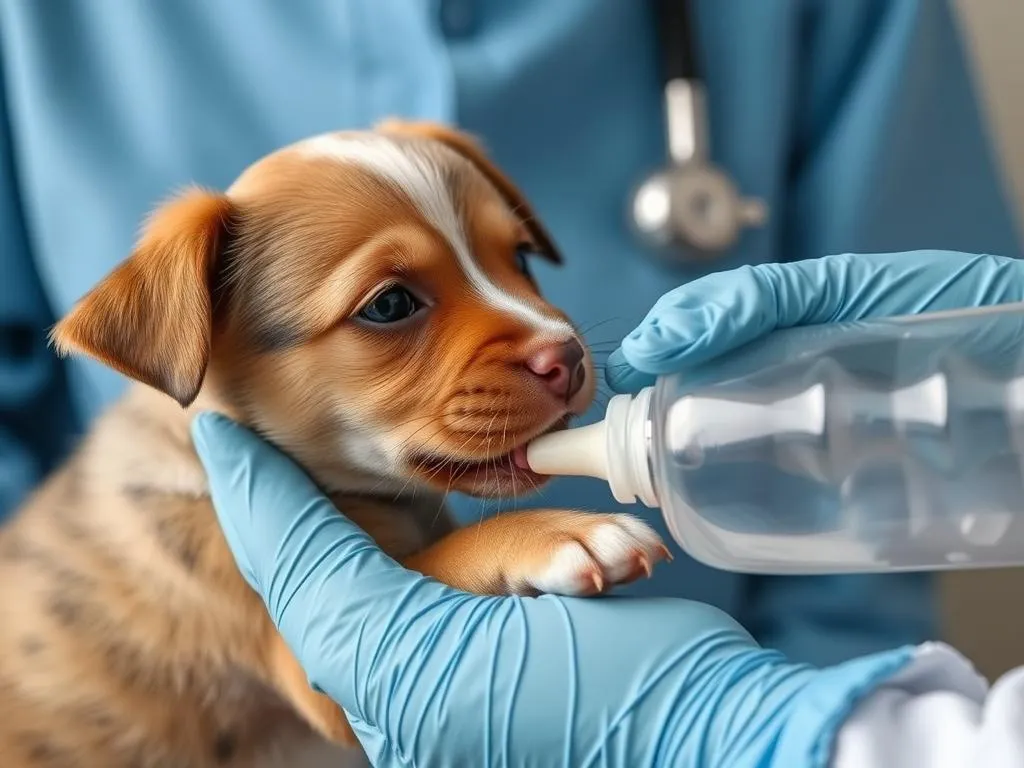
Introduction
Feeding is a fundamental aspect of raising a healthy puppy. Proper nutrition sets the foundation for their growth and development, influencing everything from their physical health to their behavior. Bottle feeding a puppy may be necessary in certain circumstances, such as when a puppy is orphaned or if the mother is unable to nurse due to health issues. Understanding how to bottle feed a puppy the right way is crucial, and veterinarians are equipped with the knowledge to guide pet owners through this important process.
Understanding Puppy Nutritional Needs
Importance of Proper Nutrition
Puppies have specific nutritional requirements at various growth stages. During the early weeks of life, they depend entirely on their mother’s milk or a suitable milk replacer for essential nutrients. Proper nutrition is critical because:
- Growth Stages: Puppies experience rapid growth in their first few months, requiring a diet rich in proteins, fats, vitamins, and minerals to support muscle development and overall health.
- Healthy Development: A balanced diet helps prevent developmental issues, supports a strong immune system, and sets the stage for a healthy adult life.
Differences Between Puppy Formula and Cow’s Milk
It’s important to note that cow’s milk is not suitable for puppies. Unlike human infants, puppies do not possess the enzyme lactase, which is necessary for digesting lactose. This can lead to digestive upset, diarrhea, and malnutrition. Instead, pet owners should opt for commercially available puppy milk replacers, which are specially formulated to meet a puppy’s unique nutritional needs. These products contain the right balance of nutrients, ensuring the puppy gets everything needed for optimal growth.
Preparing for Bottle Feeding
Choosing the Right Supplies
Before starting the bottle-feeding process, it’s essential to gather the appropriate supplies:
-
Bottles and Nipples: Look for bottles designed specifically for puppies. They should have soft, squeezable bottles that allow for easy control of milk flow. Nipples should be small and have a hole that allows the milk to drip slowly—this mimics the natural feeding process.
-
Puppy Milk Replacers: Some recommended brands include Esbilac and KMR, both of which are trusted in the veterinary community. Always follow the manufacturer’s instructions for preparation.
Setting Up a Comfortable Feeding Environment
Creating a comfortable and safe feeding environment is crucial for successful bottle feeding:
-
Quiet, Warm Space: Choose a quiet area free from distractions where the puppy can feel secure. A warm environment is essential, as young puppies cannot regulate their body temperature well.
-
Safe and Clean Area: Ensure the feeding area is clean to prevent contamination and illness. A soft blanket or towel can provide comfort during feeding.
How to Bottle Feed a Puppy
Step-by-Step Feeding Guide
Follow these steps for an effective bottle-feeding experience:
-
Hold the Puppy Correctly: Cradle the puppy in your arm, similar to how you would hold a human baby. Ensure the puppy is in a natural position, lying on its stomach, to prevent aspiration.
-
Prepare the Bottle: Warm the puppy milk replacer to body temperature (about 100°F or 37°C) by placing the bottle in warm water. Shake it gently to mix, then test a few drops on your wrist to ensure it’s not too hot.
Feeding Techniques
Observing the puppy’s behavior can help determine when they are ready to eat:
-
Signs of Readiness: Look for signs like rooting, whining, or licking their lips. These indicate that the puppy is hungry and ready to feed.
-
Encouraging the Latch: Gently place the nipple in the puppy’s mouth. If they do not latch on, you may need to squeeze the bottle slightly to release a few drops of milk. This encourages them to suckle.
-
Preventing Overfeeding or Aspiration: Monitor the flow of milk carefully. If the milk is flowing too quickly, it can cause choking. If the puppy is gulping excessively, pause to ensure they breathe properly.
Common Challenges and Solutions
Refusal to Feed
Sometimes, a puppy may refuse to feed for various reasons:
-
Possible Causes: They may be uncomfortable, sick, or simply not hungry.
-
Solutions: Try different nipples to see if the puppy prefers one over another. Adjusting the temperature of the milk or feeding at different times can also help.
Overfeeding Concerns
Overfeeding can lead to serious health issues, including bloating and diarrhea.
-
Recognizing Overfeeding: Signs include excessive drooling, vomiting, or a distended abdomen.
-
Feeding Schedules: Follow a schedule based on the puppy’s age. Newborns typically require feeding every 2-3 hours, while older puppies can gradually transition to every 4-6 hours. Consult with your vet for specific amounts based on the puppy’s weight.
Health Monitoring
Monitoring the puppy’s health during the feeding process is essential:
-
Signs of Dehydration or Malnutrition: Look for signs such as lethargy, dry gums, or lack of weight gain.
-
Veterinary Consultation: Regular check-ups with a veterinarian can help ensure the puppy is receiving adequate nutrition and growing properly.
Transitioning to Solid Food
When to Start Introducing Solid Food
Transitioning from bottle feeding to solid food is a significant milestone.
-
Timing: Puppies usually start to be ready for solid food around 4 weeks of age, but this can vary.
-
Signs of Readiness: Look for signs such as increased curiosity about food, decreased interest in bottle feeding, and the ability to stand and walk steadily.
How to Introduce Solid Food Gradually
Introducing solid food should be done gradually to avoid digestive upset:
-
Choosing the Right Food: Select high-quality puppy food that meets their nutritional needs. Look for food labeled as “complete and balanced” for puppies.
-
Step-by-Step Process: Start by mixing a small amount of puppy food with warmed puppy milk replacer to create a mushy consistency. Gradually decrease the milk while increasing the amount of solid food over several days or weeks.
Final Thoughts and Vet Recommendations
Importance of Veterinary Consultation
Throughout the bottle feeding process, it’s crucial to maintain open communication with your veterinarian. They can provide personalized advice based on your puppy’s specific needs and monitor their growth and development.
Summary of Key Points
In summary, bottle feeding a puppy the right way involves understanding their nutritional needs, preparing the right supplies, creating a comfortable feeding environment, and following proper feeding techniques. It’s essential to monitor their health and be aware of signs of feeding challenges. Transitioning to solid food should be done gradually and with care.
Conclusion
Raising a puppy is a rewarding experience filled with joy and challenges. Providing the right nutrition, particularly through the vital process of bottle feeding, is paramount for their well-being. Ensuring that you follow best practices and consult with your veterinarian can make a significant difference in your puppy’s health and happiness. Remember, every puppy is unique, and their needs may vary, so stay attentive and responsive to their requirements.









